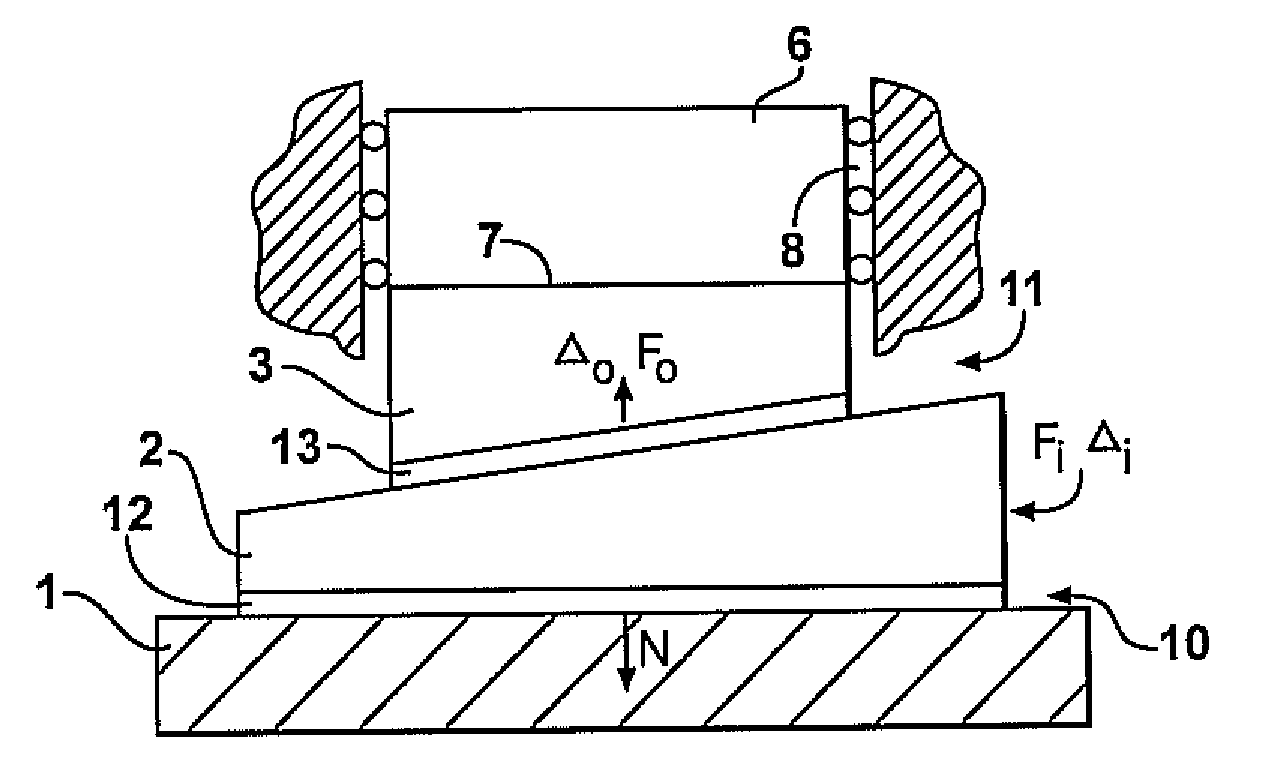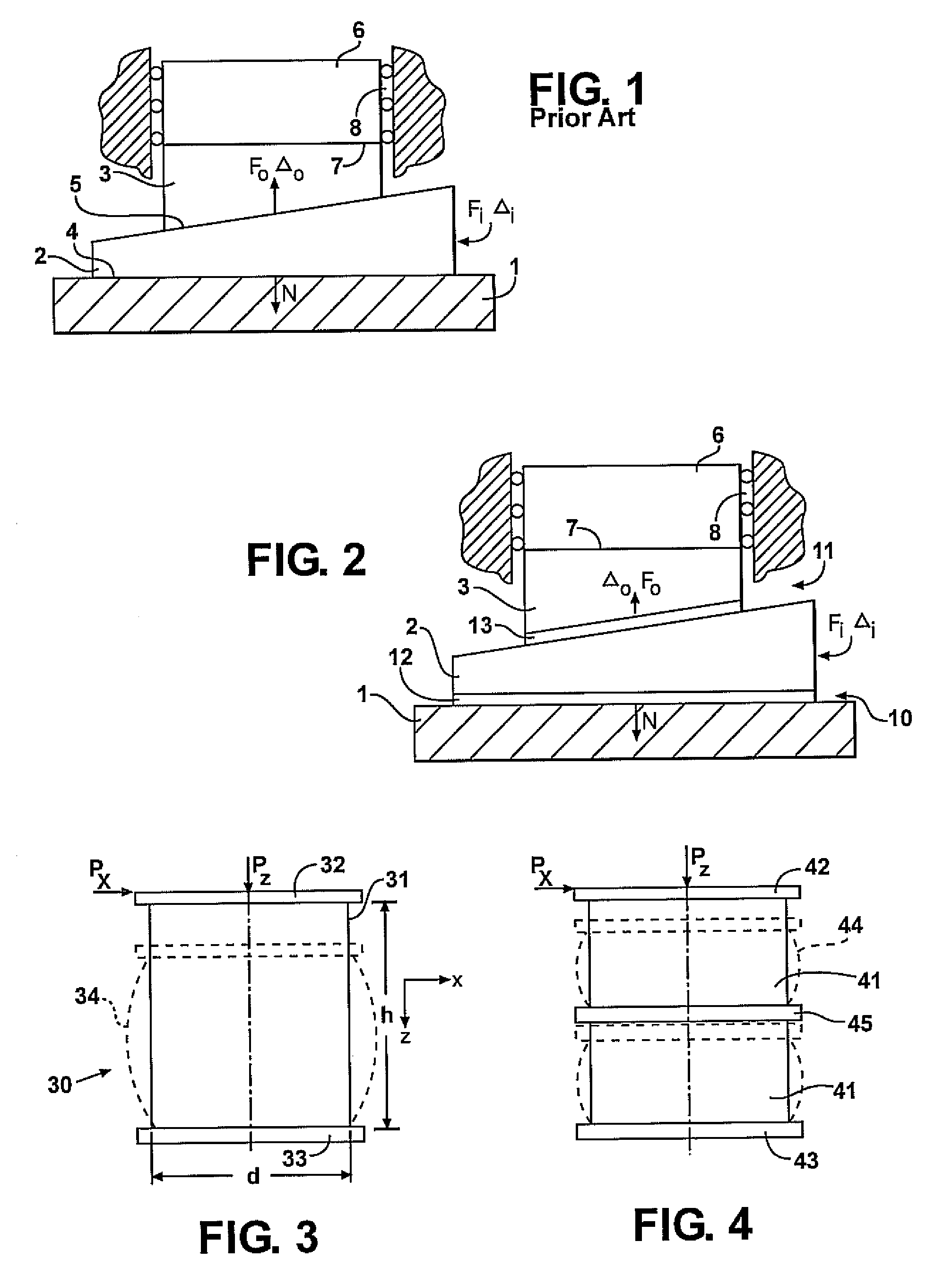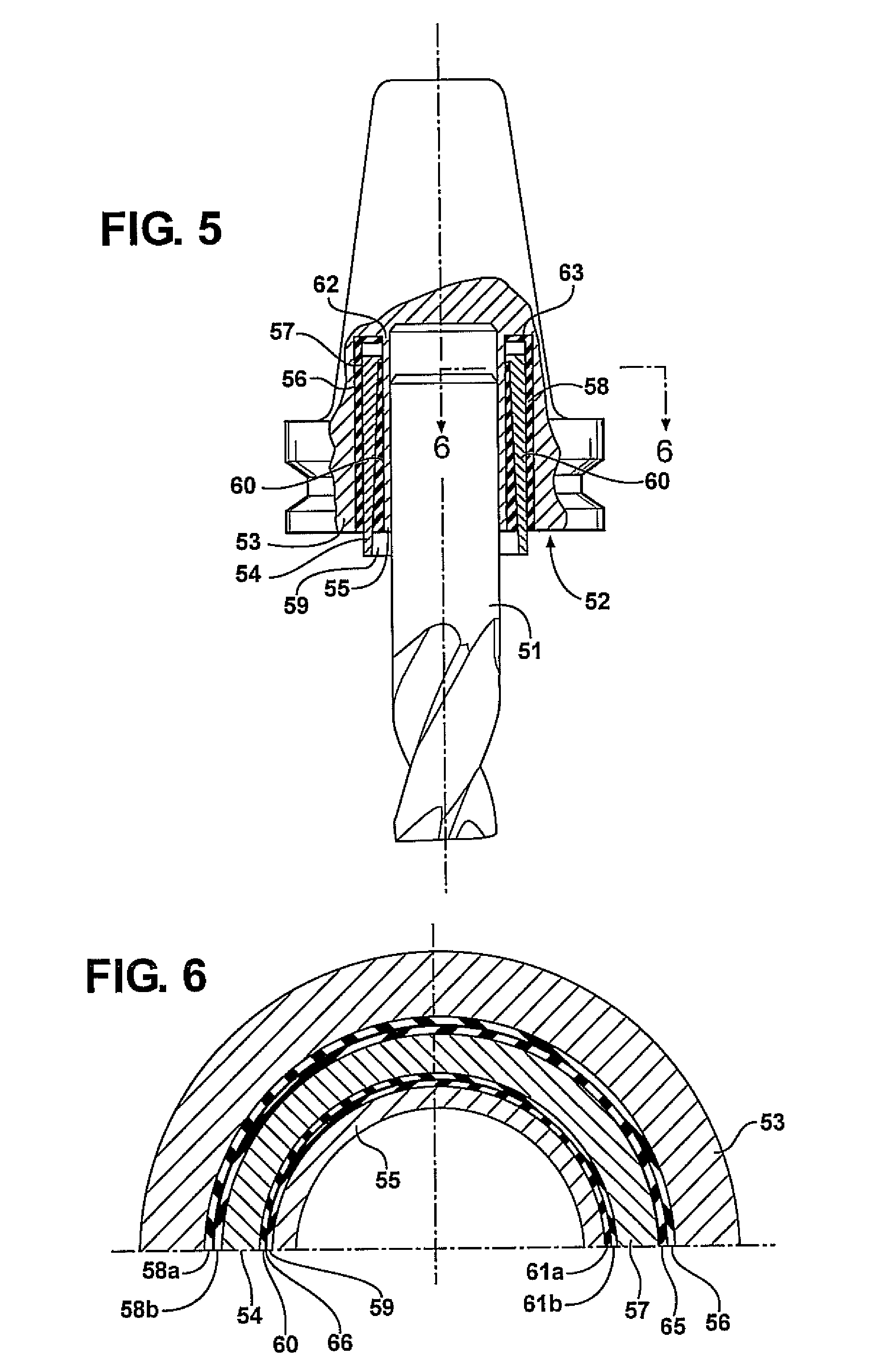Wedge mechanism
a wedge mechanism and motion-transformation technology, applied in the direction of rod connections, couplings, ways, etc., can solve the problems of increasing the size and weight of the mechanism, requiring two-stage mechanisms, and further increasing the size, weight, and cost of the device employing wedge mechanisms, so as to improve the device, improve the device, and reduce the cos
- Summary
- Abstract
- Description
- Claims
- Application Information
AI Technical Summary
Benefits of technology
Problems solved by technology
Method used
Image
Examples
Embodiment Construction
[0022]Referring to FIG. 2, the shown wedge mechanism comprises the same basic mechanical members as the prior art wedge mechanism depicted in FIG. 1, namely base member 1, movable wedge member 2, and output member 3 which can be interacting via surface contact 7 with work organ 6 and whose motion can be constrained by guideways 8. The wedge mechanism in FIG. 2 differs from the prior art wedge mechanism in FIG. 1 by designs of a first surface contact area 10 between base member 1 and the wedge member 2, which is movable along an axis in the direction of an applied force Fi to vary the separation between the surface contact area 10 and of a second surface contact area 11 disposed between movable wedge member 2 and output member 3. The wedge member 2 has a third contact surface 15 opposed to and conforming with the first contact surface 10, and a fourth contact surface 16 opposed to and conforming with the second contact surface 11. The motion of the output member 3 along the axis in t...
PUM
| Property | Measurement | Unit |
|---|---|---|
| Poisson's ratios | aaaaa | aaaaa |
| thickness | aaaaa | aaaaa |
| mechanical | aaaaa | aaaaa |
Abstract
Description
Claims
Application Information
 Login to View More
Login to View More - R&D
- Intellectual Property
- Life Sciences
- Materials
- Tech Scout
- Unparalleled Data Quality
- Higher Quality Content
- 60% Fewer Hallucinations
Browse by: Latest US Patents, China's latest patents, Technical Efficacy Thesaurus, Application Domain, Technology Topic, Popular Technical Reports.
© 2025 PatSnap. All rights reserved.Legal|Privacy policy|Modern Slavery Act Transparency Statement|Sitemap|About US| Contact US: help@patsnap.com



